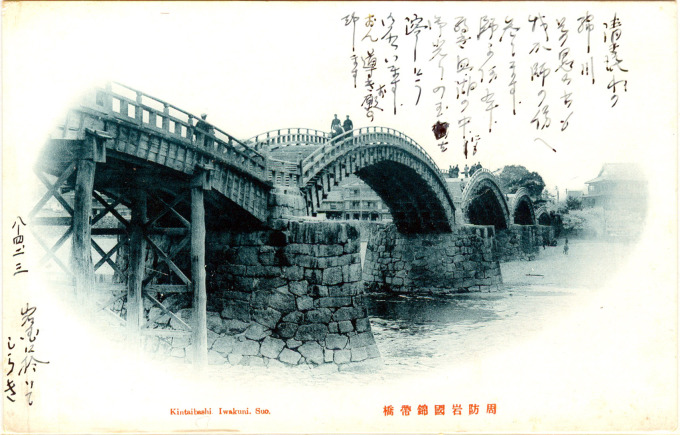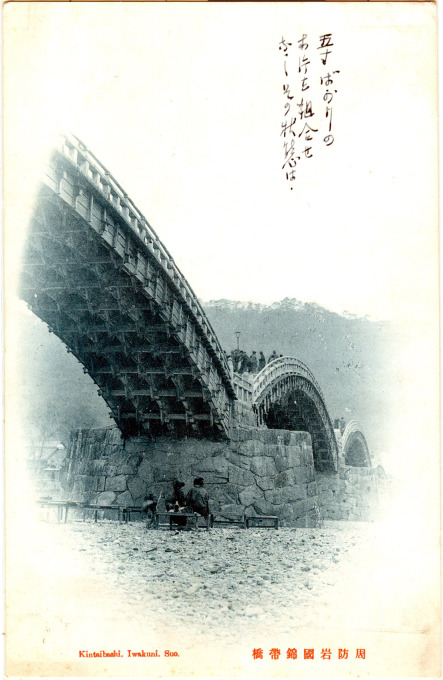“Among other little treasures which I bought was the work of a local artist which captured an invaluable memory of the Iwakuni area, a lovely painted scroll, then called a kabemono but now called a kakejuku, of two young kimono clad damsels walking along a narrow path beside the swiftly flowing Nishiki river.
“Between the path and the river, there are some small leafy bushes and also an impressively large tree whose branches are stretching out across the water towards the other side of the river.
“Teasingly, the branches are hiding from view parts of Iwakuni’s famous Golden Bridge, the Kintai bashi. Adrift in the river are two or three small rowing boats or little canoes; while, way in the background behind it all, there are the tall, towering, green hills completing the picture.”
– Memories of Japan 1946: (A People Bowed But Not Broken), Bernard T. Smith, 2012
“Kintaibashi is located on the foot of Mt.Yokoyama, at the top of which lies Iwakuni Castle. After Iwakuni Castle was completed in 1608 by Kikkawa Hiroie, the first lord of Iwakuni Domain, a series of wooden bridges were built. However, most of them were destroyed by floods several times before the construction of the iconic Kintaibashi in 1673. New stone piers replaced the old wooden ones.
“Though thought to be flood-proof; the bridge was destroyed by a flood the next year. As a result, the stone piers were redesigned for greater strength, and a special tax was created to maintain the bridge. This maintenance involved periodic rebuilding of the bridge: every 20 years for 3 spans in the middle, every 40 years for 2 spans connecting to the riverside.
“Consequently, the bridge remained undestroyed for 276 years, until washed away again by flooding from typhoon ‘Kijia’ in 1950. It had been in a weakened state at the time, due to the fact that the Japanese had stopped maintaining the bridge during World War II, and that the year before the typhoon, a large amount of gravel was taken by the US military forces from the river around the bridge to expand the US Marine Corps Air Station in Iwakuni, strengthening the flow of the river.
“In 1953, the bridge was reconstructed similarly to the original, using metal nails made from the same tatara iron as the Katana to increase its durability. Between 2001 and 2004, all five bridge girders were restored for the first time in 50 years.”



